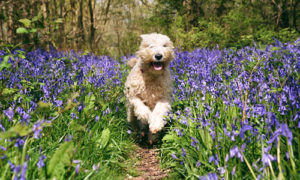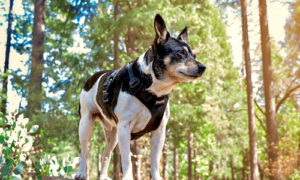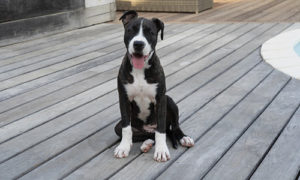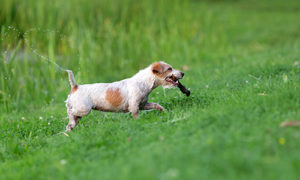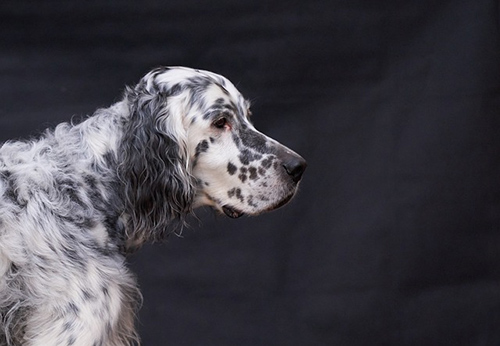
English Setters were developed from spaniel stock, and they were once known as “Setting Spaniels.” The English Setter arose from a mixture of Water Spaniel, Springer Spaniel, and Spanish Pointer stock. Two British breeders originally developed the modern English Setter type. In the 1800s, Richard Llewellin based his breeding program on Edward Laverack’s dogs, which became the basis for the field-bred English setter. They remain a favorite field-trial dog, and some breeders create strains with dual potential; numerous English Setters have earned both field and conformation titles.
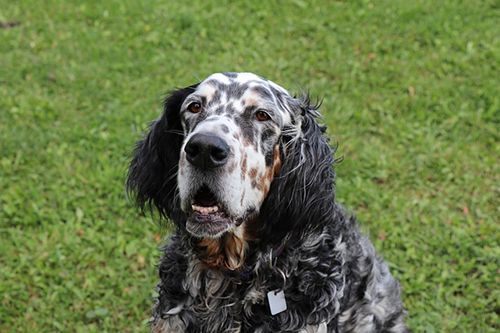
Breed Standard
This dog is an elegant, well-balanced sporting and gundog free of extremes. Its neck is long, blending gracefully into a slightly sloping topline. The tail is carried level with the back and is covered with straight feathering. The dog’s head is lean and long, with a square, prolonged muzzle and parallel planes. The dog possesses low-set ears carried close to the head and covered with silky feathering. Field bred strains tend to be smaller and less consistent than the type seen in the conformation ring.
English Setter Temperament
English Setters are known for their gentle, tolerant demeanor. The dogs are friendly, outgoing, crave companionship, and get along well with everyone, making them excellent family dogs. They also make great therapy dogs and excel in most canine sports, such as agility and obedience.
Breed Facts
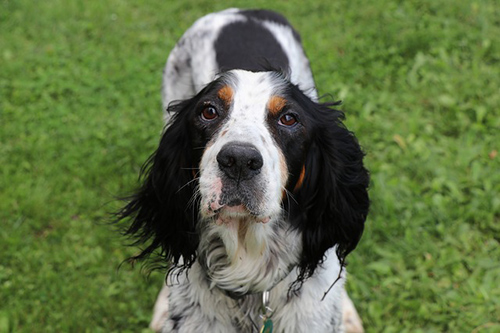
- Grooming: The coat needs brushing two or three times weekly and a washing about every six weeks. The coat needs trimming every six to eight weeks by a groomer or you, the owner.
- Activity level: Moderate to high. These dogs are incredibly energetic; therefore, you have to keep them active. Well-exercised English Setters make well-mannered house dogs. Allow them to run vigorously in a fenced yard. They make excellent running and biking buddies.
- Color: White intermixed with flecking of a darker color: orange belton (white with tan flecking), blue belton (white with black flecking), tricolor (blue belton with tan points), liver belton, lemon belton.
- Coat: The dog’s coat is straight and flat with longer silky feathering on the ears, chest, abdomen, legs, and tail.
- Group: Sporting
- Year recognized by the AKC: 1878
- POPULARITY: Not very common
- FAMILY: Setter, Pointer
- AREA OF ORIGIN: England
- DATE OF ORIGIN: 1300s
- ORIGINAL FUNCTION: Bird setting and retrieving
- TODAY’S FUNCTION: Pointing, pointing field trials
- OTHER NAMES: None
Health
- MAJOR CONCERNS: CHD, elbow dysplasia, hypothyroidism, deafness
- MINOR CONCERNS: PRA, OCD
- OCCASIONALLY SEEN: Epilepsy
- SUGGESTED TESTS: Hearing, elbow, hip, thyroid, (eye)
- LIFE SPAN: 10 to 12 years
- WEIGHT: Male: 60 to 65 pounds; Female: 50 – 55 pounds
- HEIGHT: Male: About twenty-five inches – Female: About twenty-four inches
Breeders and Buying Advice

Find a reputable and experienced breeder vested in each dog’s welfare. Potential owners may have to wait for a puppy. Pay a visit to the breeder’s kennel or property to view the mother of your puppy and the littermates before making your decision. If you want to buy a field-trial English Setter, limit your search to field-bred lines.
- Parent club: English Setter Association of America (www.esaa.com); founded in 1931
- Regional clubs: There are over 20 regional US English Setter clubs; you can find this information on the “Regional Clubs” page on the club’s website.
- Rescue: English Setter Association of America Rescue Trust

